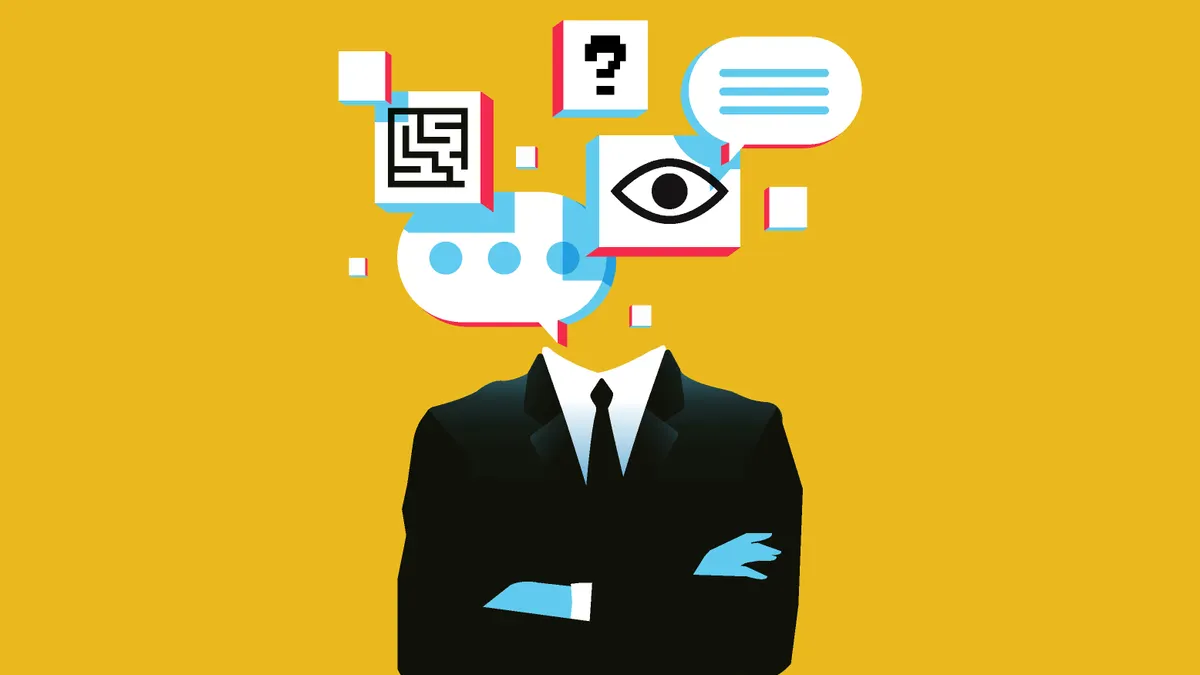Employers have long seen the need for training employees in hard skills. In recent years, soft skills like leadership and communication have crept into learning and development initiatives, too. Some employers have looked to L&D to increase employees' emotional intelligence or emotional quotient (EQ) — a trend that can give staff members a better sense of how they can work effectively with others while meeting their own needs.
"Many of us have been led to believe that soft skills and emotional intelligence (EQ) are strengths you have to be born with, but it's simply not true," Cara Brennan Allamano, SVP, human resources at Udemy told HR Dive via email. "Abilities like building solid relationships, being a good communicator and conflict management all require EQ skills that can not only be learned, but also strengthened over time."
Still, with all the training thrown at employees — from safety training to upskilling — how can organizations stress the importance of EQ training when many don't even know what it is?
How important is EQ training?
"Employees who've had training around emotional intelligence go on to be the teammates who communicate more effectively," Allamano said, "share and respond to feedback with greater empathy, and who find more purpose in their work."
As we move toward a knowledge-based economy, being able to effectively communicate with colleagues and employees will become one of the most valuable skill sets someone can possess, said Cortney Harding, founder of Friends With Holograms. "As the workplace becomes more diverse, employees need to be able to interact well with all sorts of people."
Unless employees work in a vacuum and don't interact with co-workers or clients, improving their emotional intelligence can transform their work experience, according to Oji Life Lab CEO Matt Kursh. He told HR Dive in an email that there are a variety of tools and techniques that can help workers acquire these skills.
"Recognizing your emotional state in a variety of settings — meetings, one-on-ones, the occasional corporate cage match — takes practice," he said. "Work's intense! And it's even harder to learn how to regulate those emotions to allow you to better meet your goals. The good news is that each incremental improvement in your [EQ] will translate to benefits at work and at home."
Building buy-in for EQ
Prioritizing EQ development can help workers at every level perform better and find more reward in their work. According to Kristen Fyfe-Mills, associate director of communications at the Association for Talent Development, it can start with managers emphasizing the importance of EQ and letting workers know it can be learned.
"One way to emphasize the importance is by modeling those skills in the interactions managers and leaders have with their teams," Fyfe-Mills told HR Dive in an email. "Fostering an environment where emotional intelligence is valued and practiced helps ensure that when the skills are learned they can also be implemented." Training, when made available, is effective, she added.
Allamano knows focusing on developing employees' EQ may be perceived as taking away from the "real work" they need to be accomplishing each day. "It's important that L&D and others make a business case for continuous learning and gain executive buy-in," she said. "Learning cultures can only thrive when senior leaders don't just sign off on L&D programs but actively participate and openly talk about their own experiences with taking risks and failing." Fortunately, she added, there's ample data to show the ROI of training on emotional intelligence.
How can workers learn EQ?
Alexandra Connell, co-founder of Pluma, sees building emotional intelligence as the process of working through old habits and developing new behaviors without sacrificing one's sense of self. One-on-one coaching is one effective method for strengthening EQ, Connell told HR Dive via email.
"Elements that are important to EQ like self-awareness, self-management, relationship management and social awareness are exactly the topics that a coach can work on with an employee in a safe and confidential context," she said. Becoming more comfortable with conflict, for example, is a slow process, but by moving through conflict scenarios with a coach, workers can brainstorm best practices and be held accountable to try them out in their day-to-day, Connell said.
As an alternative to personal coaching, Harding suggested VR as a viable solution: "It allows employees to practice having difficult conversations and reading body language in a safe space where they can go through training multiple times if needed, all on their own time," she said. It can be more cost-effective for employers, too, she noted.
Overall, it's important to take steps to break down the organizational barriers that keep employees from connecting with one another, such as the need to compete for recognition, said Carley Childress, CEO of Macorva. "If you make time and space for meaningful connections with employees, you will encourage teamwork and collaboration," she told HR Dive via email.
Challenges and success
Organizations interested in L&D for EQ should provide regular opportunities for teams to build relationships and test new behaviors, Allamano said. Udemy's monthly "Lunch Roulette" program connects four colleagues who don't typically interact and sends them out to lunch together — giving each person a chance to listen, learn and communicate. Activities like workplace book clubs can also build relationships and EQ, she said.
A well-designed EQ program must also introduce key concepts and then support each learner's personal exploration of those ideas, according to Kursh. "Most importantly, learners need lots of opportunities to practice their new skills so that they develop lasting habits," he added.
Though it may take more patience to build a holistic EQ learning curriculum, it's worth it, Kursh continued. "Yes, it will take time and money to get there, but there are few skillsets that are as universally helpful as emotional intelligence."



















